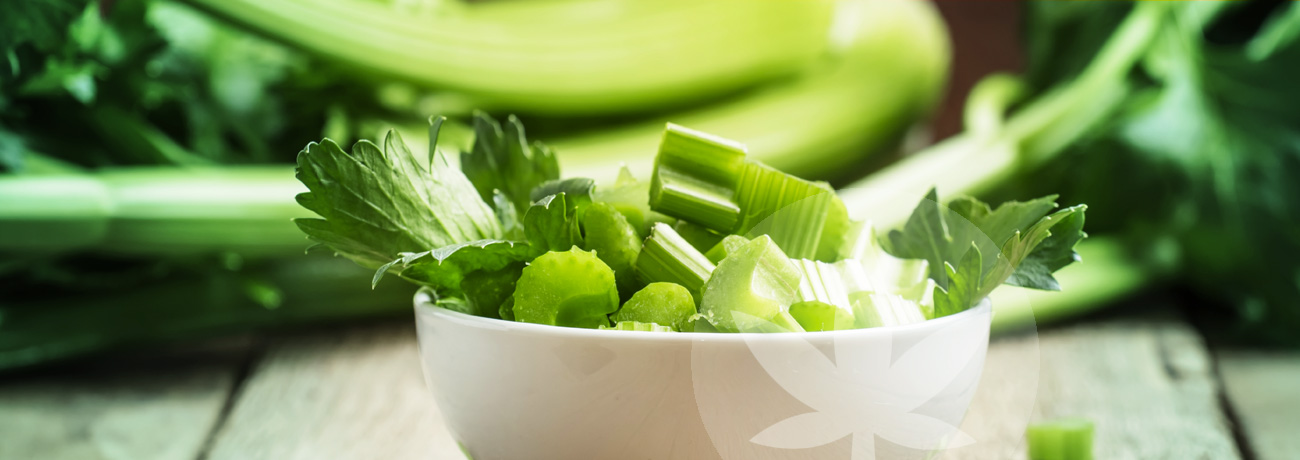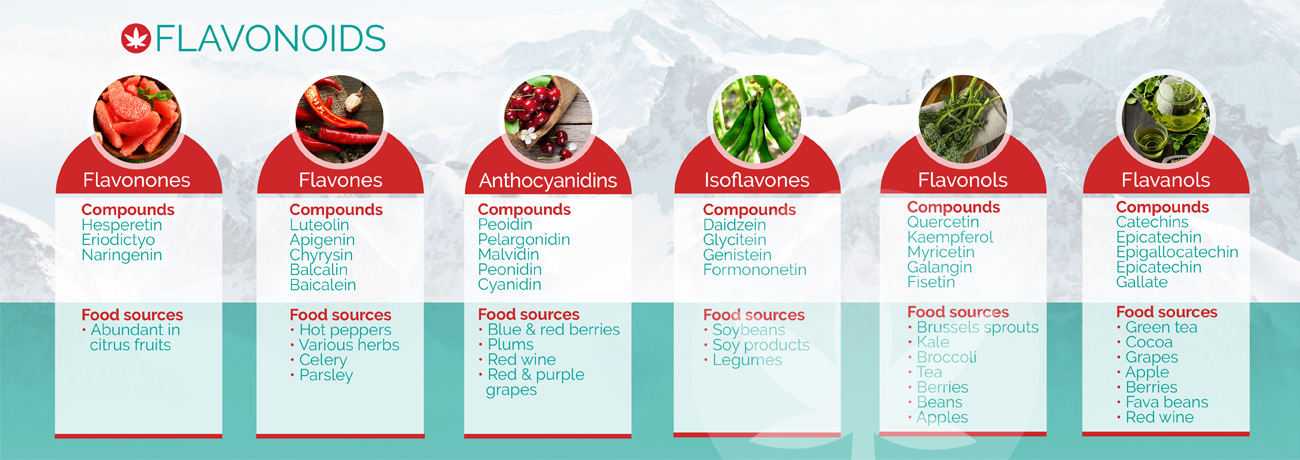What Are Flavonoids?

Flavonoids may only account for a tiny share of the phytochemicals inside hemp, but that doesn't make them any less important. Keep reading to find out what you need to know about these colourful compounds.
Contents:
What do flavonoids do?
Take a glance down the fruit and veg aisle in your local supermarket, and what's the first thing that jumps out at you? Most likely, it's the dazzling array of colours! From red peppers to oranges, onions, blueberries, and grapes, all these fruits and vegetables owe their vibrant colours to one compound in particular—flavonoids!
Flavonoids are tiny phytonutrients that exist in the skin and outer layers of fruits, vegetables, and plants. Every colour represents a different flavonoid, and helps attract pollinators, filter UV light, or protect against disease.
Fortunately, the protective qualities of flavonoids could extend to more than just plants and food. When people consume flavonoids, researchers have discovered the compounds to display some exciting possibilities as natural antioxidants. Before we take a closer look at what effects flavonoids could have on human physiology, it helps to know where to find them.
Where do you find flavonoids?
We should be clear; the term "flavonoids" is a general classification for four main groups: flavonoids, isoflavonoids, neoflavonoids, and anthocyanins. However, for the sake of simplicity, flavonoid is the term most commonly used. The only significant distinction you should be aware of is that there is a class of flavonoids exclusive to the Cannabis sativa species—cannflavins. More on those later.
Don't worry if the thought of remembering over 6,000 flavonoids and four different categories seems daunting. Researchers have only just started looking at each of the groups in isolation.
For now, it is more than sufficient to highlight several prominent flavonoids, many of which you will find in household food, drink, and plants.
Examples of flavonoids
• Apigenin
Over 68% of the total flavonoids in chamomile plants are apigenin. Other familiar sources include parsley, celery, and, of course, chamomile tea.
• Cannflavins A, B, C
As we mentioned early, cannflavins are a particular class of flavonoids that exist solely within the Cannabis sativa species. Cannflavins A and B were only discovered in the 1980s, while cannflavin C wasn't isolated until 2008.
• Kaempferol
You may not recognise the name of this flavonoid, but you consume it regularly! Kaempferol is prevalent in apples, grapes, green tea, Brussels sprouts, and the aloe vera plant.
• Quercetin
Although commonly found in vegetables, grains, and red onions, the bitter flavour of quercetin has made it a popular addition to dietary supplements and drinks.

How flavonoids work
With over 6,000 flavonoids, it's impossible to say definitively how they all interact with the human body, and to what end. There is also the entourage effect to consider, a powerful phenomenon in which cannabis compounds synergise for enhanced effects. Obviously, the larger the molecule, the more impactful this effect—which is why cannabinoids and terpenes are seen as the key players in the entourage effect.
But, flavonoids are just as crucial to maintaining this chemical synergy. And, given the role flavonoids could play in well-being, not to mention their lack of toxicity, there's nothing to lose and everything to gain by including them in your wellness regime.
Are flavonoids good for you?
Let's start by saying flavonoids definitely aren't bad for you. They naturally occur in fruits and vegetables essential to a healthy lifestyle. Moreover, several studies appear to show a positive correlation between flavonoid intake and various aspects of well-being.
As for just "how good" they are, that's a topic still under review. What we do know, however, is that flavonoids appear to be powerful antioxidants.
In 2016, the Journal of Nutritional Science undertook a comprehensive review[1] of flavonoids. The report stated that "flavonoids are now considered as an indispensable component in a variety of pharmaceutical, medicinal and cosmetic applications". Their effect on key parts of human physiology has led scientists to predict that flavonoids have potential as "drugs in preventing chronic disease". However, they also acknowledge that future research is essential to realising their true potential.
Why flavonoids are important
Let's be honest; a world without colour would be a very bland place. But, plants and foods without flavonoids could be even more disastrous. Not only do they play a crucial role in the entourage effect—they may also prove to be potent allies against oxidation.
Thankfully, studies are underway to identify the attributes of specific flavonoids. We already know how several of the flavonoids listed above could influence the human body, but given the sheer number of flavonoids that exist, there is still plenty to discover. With that in mind, we hope this snapshot of flavonoids is useful and highlights the importance of a diet (and full-spectrum CBD oil) rich in these organic compounds.
If you want to experience the power of the entourage effect, browse our full-spectrum range of CBD oils, capsules, and supplements via the Cibdol store. Or, if you want to know more about the different types of flavonoids and where they come from, browse our CBD Encyclopedia for a complete breakdown.
[1] Panche, A. N., Diwan, A. D., & Chandra, S. R. (2016). Flavonoids: an overview. NCBI. Published. https://www.ncbi.nlm.nih.gov/pmc/articles/PMC5465813/ [Source]
[1] Panche, A. N., Diwan, A. D., & Chandra, S. R. (2016). Flavonoids: an overview. NCBI. Published. https://www.ncbi.nlm.nih.gov/pmc/articles/PMC5465813/ [Source]







